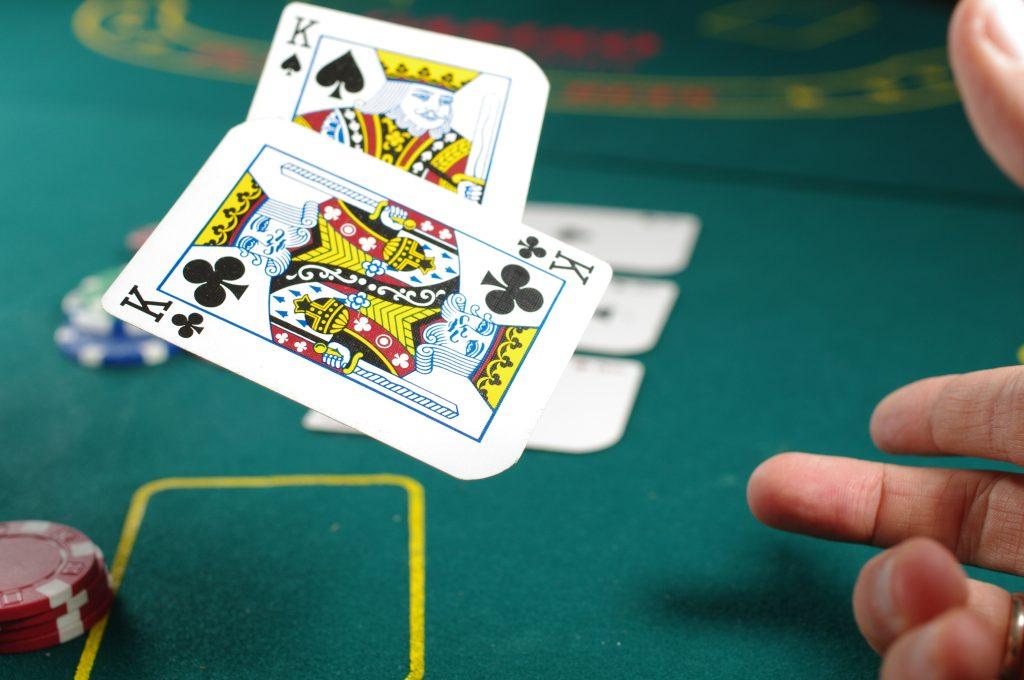What type and brand of playing cards do the best casinos use?
Playing cards emerge as the silent architects of fortune in the casinos, where every game combines skill, strategy, and luck. These seemingly simple equipment are the heartbeat of numerous games, serving as the conduit between the player and the ever-elusive lady luck.
From the strategic complexities of poker and the rapid decision-making of blackjack to the sheer unpredictability of baccarat, playing cards are the unspoken pillars of the diverse world of casino games.
The history of playing cards is as rich and varied as the games they facilitate. Tracing their origins back to ancient civilizations, playing cards have evolved over the centuries, adapting to different cultures, preferences, and gaming needs. This evolution has led to the development of many types and brands, each with unique characteristics, aesthetics, and functionalities, catering to the diverse palette of casino fans.
For the seasoned players who frequent the illustrious gaming tables, the choice of playing cards is not a trivial matter. With their refined tastes and preferences, regular players tend to be highly discerning about the type and brand of playing cards. They seek a harmonious balance between durability, feel, and visibility, ensuring that the cards withstand the rigors of frequent play and provide an optimal gaming experience. The texture, the print quality, the size of the indices, and even the design can significantly impact a player’s interaction with the cards and, subsequently, their overall gaming experience.
The attention to detail and preference for specific types and brands of cards is not exclusive to the players. Casinos, the grand stages where fortunes are made and lost, are equally discerning in their choice of playing cards.
The best casinos globally give paramount importance to the quality and integrity of playing cards, understanding that these cards are not just tools but the essence of most of the games of chance and skill.
Varieties of Playing Cards
Before exploring the preferred brands in eminent casinos, it is imperative to comprehend the diverse categories of playing cards predominantly utilized in the realm of gaming:
Standard Playing Cards
These represent the quintessential 52-card decks extensively employed for poker, blackjack, and bridge games. These decks are segmented into four suits: hearts, diamonds, clubs, and spades, each encompassing thirteen ranks.
Bridge Playing Cards
These decks are the same as the standard decks but the cards are smaller. This is because a bridge hand starts out with 13 cards and that’s a lot of cards for a human hand to hold! Some players need to use card holders to hold all 13 but for most people the smaller size of the cards works well enough.
Pinochle Cards
Pinochle, a distinctive card game, necessitates a specialized deck comprising 48 cards. This deck incorporates dual instances of each rank across the four conventional suits.
Jumbo Index Cards
Similar to standard playing cards, they are characterized by their enlarged, conspicuous indices, facilitating enhanced readability for dealers and players, thereby gaining popularity in casinos.
Plastic-Coated Cards
A substantial proportion of casino-grade cards are endowed with a plastic coating, augmenting their durability and lifespan. The enhanced resistance to wear and tear renders them apt for recurrent utilization.
100% Plastic Cards
These cards are fabricated from plastic, bestowing them heightened durability, water resistance, and resilience to bending and creasing, making them a favored selection in casinos owing to their enduring nature.
The emergence of online casinos like BetMGM casino has significantly altered the gaming landscape, eliminating the need for physical playing cards. In this digital domain, sophisticated software replicates the traditional card gaming experience, ensuring fairness and maintaining the essence of the games.
Major Brands Casinos Use
The United States Playing Card Company
The United States Playing Card Company, established in 1867, is a pivotal manufacturer of playing cards globally. It has been instrumental in producing several renowned playing card brands, each with unique characteristics and appeal. Initially based in Cincinnati, Ohio, the company relocated to Erlanger, Kentucky.
The company’s inception by Robert Morgan marked the beginning of a journey that would see several innovations by Samuel Murray, propelling the company to leading positions in the playing card manufacturing sector.
Bicycle Playing Cards
Bicycle, a legendary brand under the United States Playing Card Company, has been a staple in casinos since 1885. These cards are revered for their convenience, soft texture, and ease of handling, making them popular among dealers and experienced players.
The traditional deck of Bicycle consists of 52 basic cards, two jokers, and two information cards, with an angel riding a bicycle usually depicted on the back. These cards are esteemed by gambling operators and magicians, with many famous illusionists having worked with Bicycle decks.
Bee Playing Cards
Bee, another distinguished brand, has been in production since 1892. Initially intended for casinos, these cards are slightly more expensive than Bicycle but offer enhanced durability, making them popular among professional gamblers and magicians. The presence of 92 on an ace of spades is indicative of the year they started manufacturing.
Aviator and Tally-Ho
Aviator, introduced in 1927, commemorates aviator Charles Lindbergh. These cards are less resistant to wear and are more economical, making them a preferred choice for casual play.
Tally-Ho, another brand under the United States Playing Card Company, is particularly popular among professional magicians and fans of card tricks.
Fournier Playing Cards
Fournier, an ancient brand of playing cards, has been in production since 1868. These cards are exclusively available in the plastic version, offering durability and resistance to wear. They are a popular brand in post-Soviet states.
Characteristics and Maintenance of Casino Playing Cards
Casino playing cards are crafted from premium, heavy cardstock, featuring a unique, air-cushioned finish, providing a smooth and professional feel during gameplay. They are usually poker-sized, incorporating security features like UV ink and holograms to ensure fair play. The integrity of these cards is maintained through routine replacement, regular inspections, and proper disposal after retirement to prevent reuse.
Proper care and cleaning can prolong the lifespan of casino playing cards. Handling them carefully, keeping them dry, cleaning them gently with a soft, damp cloth, storing them properly in a protective case, and rotating between multiple decks are essential in maintaining the cards.
Conclusion
The intricate selection of playing cards in casinos is a testament to the importance of quality and integrity in gaming. Brands like Bicycle, Bee, Aviator, Tally-Ho, and Fournier have carved their niche through their commitment to quality, durability, and unique features. The meticulous maintenance and the incorporation of security features in these cards underscore the significance of fair play in the casino industry.
The evolution of playing cards and the emergence of various brands reflect the ever-evolving landscape of the casino world, where every detail is pivotal in enhancing the gaming experience and maintaining the sanctity of the games.





